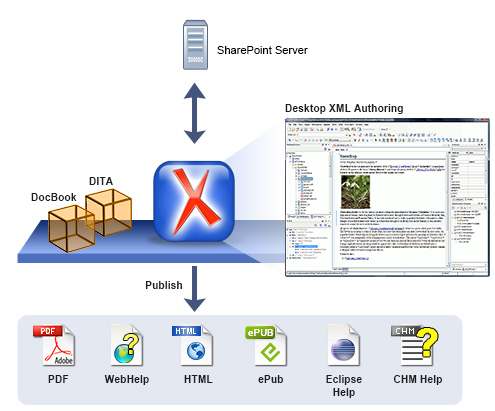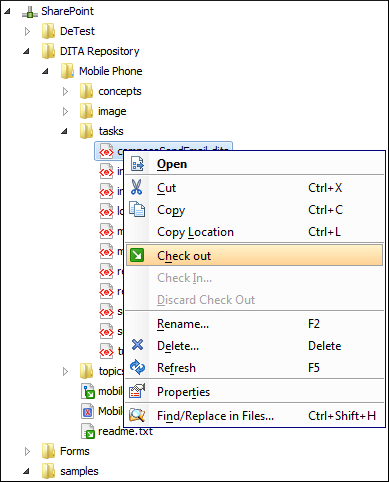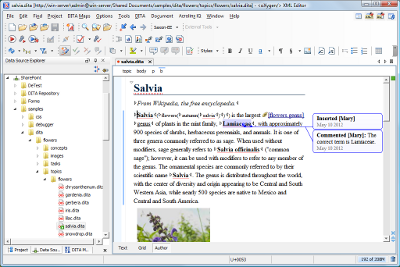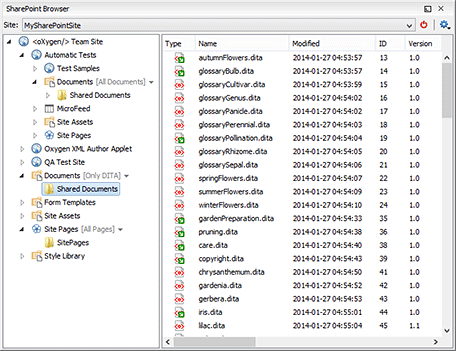Microsoft(R) SharePoint CMS Integration
The Oxygen integration for Microsoft SharePoint offers an editing solution for all users working with documents stored in SharePoint content repositories. The users benefit from a platform for creating and editing XML documents and publishing them in multiple formats (including PDF, HTML, and WebHelp).

New resources can be easily created on the repository or imported from your local machine to the repository using contextual menu actions. The drag-and-drop support allows you to move and copy resources from the repository. Oxygen can edit the XML content in a visual mode, similar to a regular text processing application.
To connect to a SharePoint repository, you need to configure a suitable connection. Find more information about this in the user manual.
Browse SharePoint CMS Using a Dedicated View
The SharePoint Browser view contains several functional areas that allows you to connect, browse, and interact with a SharePoint repository. The SharePoint site structure is presented in a tree-like fashion, providing an overview of the site hierarchy together with actions specific to each node type (sites, libraries, folders). Next to the navigation tree, the content of the selected folder is presented depending on the current view. You can promote the items you are interested in by using the provided filtering and sorting support.
SharePoint Filtering Support
You can filter the content stored on a SharePoint Repository depending on the columns available for the current library. Oxygen allows you to apply multiple filters at the same time to display the items you are interested in.

Browse SharePoint CMS Using the Data Source Explorer
You can view the properties and status of documents from the repository, check-out or check-in documents, or verify if a document is used by someone else.

SharePoint Support in DITA Maps Manager
You can open DITA maps stored on a Microsoft SharePoint server, modify, check-in or check-out topics or other resources, directly from the DITA Maps Manager view.

Please note that Microsoft SharePoint support is available only in Oxygen Enterprise Edition.



